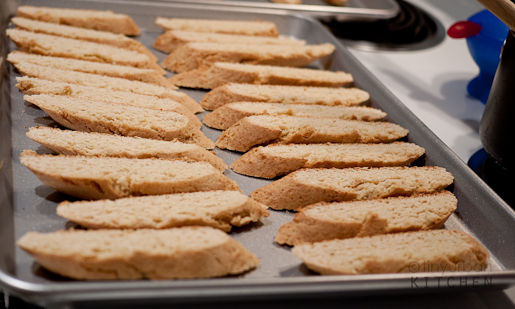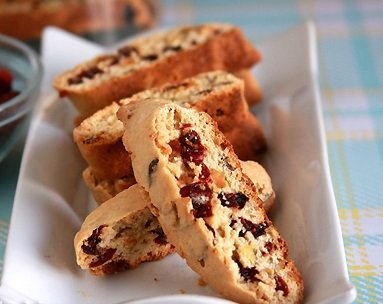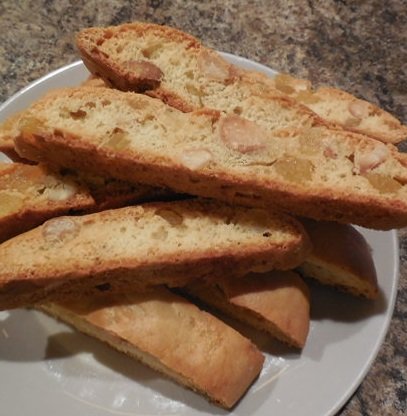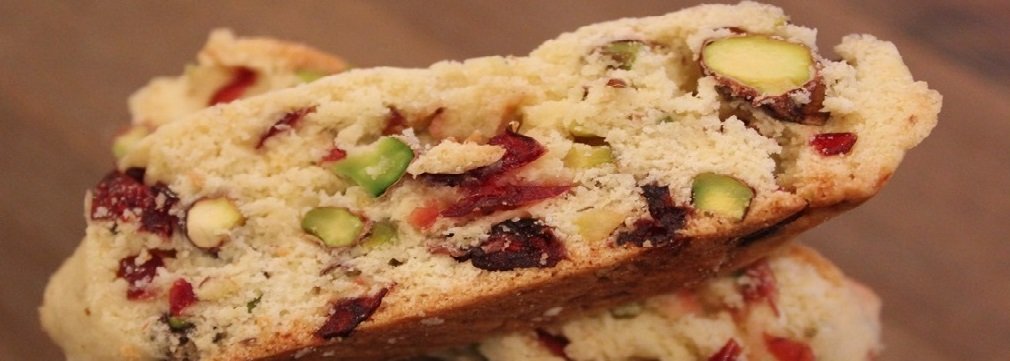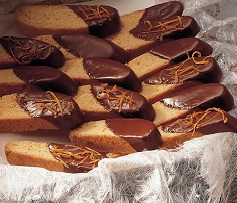Gluten Free Flours & Starches
If not Gluten Free Flours what are you looking for?
I am far from a gluten free flour expert and I am still learning about gluten free baking. But here is a bit about what I know, I hope this help.
- You have to combine. One GF flour does not wheat flour make. I will offer up some ideas but for result you are happy with you may need to find your own combinations.
- Experiment with a dozen Gf flours and see what combinations work best for you. Don’t go by my recipes or anyone else’s. Make it once as you read it. And then fool around with variations.
- Accept your lot, and instead of constantly grumble about the fact that you cannot mindlessly dump in a cup of white enriched flour, think of this as a chance to learn.
And
- Remember. It will never taste like the baked good you are used to eating, but it will become something new and enjoyable to eat.
For starters let’s cover 1st base and uncover what gluten free flours are available to you, broken down by categories:
- Amaranth Flour Brown rice flour Buckwheat flour
- Corn flour Corn meal Millet flour
- Oat flour Quinoa flour Sorghum flour
- Sweet potato flour Teff flour Yam flour
- Arrowroot flour Corn starch Potato flour
- Potato starch White rice flour Tapioca flour
NUT FLOURS (including meals)
- Almond flour Cashew flour Chestnut flour Coconut flour Hazelnut flour Peanut flour
- Pecan flour Walnut flour
- Fava bean flour garbanzo bean flour
- Kinako (roasted soy bean) flour
guten free Whole grain flour
Amaranth Flour
Is very fine, has a light cream color, and a pleasant nutty taste. Ground from the amaranth seed the flour has a high moister content and is best used in combination with other gluten-free flours. It produces baked goods that are moist and dense, but added starch helps to lighten the texture. The flour tends to form a crust on the outside of baked goods, sealing the outside before the product is completely done, so longer baking times are generally necessary.
Brown Rice Flour
Brown rice flour is a type of flour made from rice kernels that have been processed to remove the outer hulls, but not the nutritious bran layers covering the kernel. When the kernels are ground into gluten free flour, the resulting color is only a shade darker than flour milled from polished rice and the texture is not quite as smooth. For most recipes, both brown and white rice flour may be used interchangeably, but brown rice has a nuttier flavor. When used in baked goods, such as cakes and cookies, gluten free flour made from brown rice provides a grainy texture with a fine, dry crumb.
Buckwheat flour
Is a very fine grind of the kernel of the buckwheat (Saracen corn) plant. It has a unique, strong, musty, slightly sour, slightly nutty flavor and come in light or dark. For light buckwheat flour, the hull is removed before the groats are ground. Dark buckwheat flour is made of the unhulled groats: it is grayish, with tiny black speck of hull, and has a strong, earthly taste. Buckwheat flour tends to make baked goods heavier and give them a distinctive, stronger flavor and is usually blended with other gluten free flower.
Corn Flour
A type of flour milled from dried kernels of yellow corn. It is similar to cornmeal except that it is ground to a finer consistency than cornmeal. It is used to make cornbread, muffins, pancakes, polenta, and tortillas. Corn flour is very useful for gluten-free quick breads. Corn flour is also available as a gluten-free flour known by the name “Atole flour”,which is ground from dried or roasted blue corn.
Cornmeal
Cornmeal is a flour-like substance that has larger granules than regular flour and is produced from grinding dried kernels of yellow or blue corn. Cornmeal is very useful for gluten free quick breads. Baked goods have a course, gritty texture with a granular crumb and a flavor of sweet corn. If you are look for the ultimate in taste look for fresh ground cornmeal (especially if it is stone ground) because it has more flavor than cornmeal that has been ground using other methods.
Millet flour
Millet grain is not a true grain but is closely related to corn and sorghum. The flour is made from finely ground grain. It can substitute for rice flour in small amounts in recipes and adds a nice cream color to baked goods. It produces a light, dry, delicate consistency and a smooth crust
Oat Flour
Oat flour is produced from hulled and cleaned oats, called groats. It is also ground from rolled oats or oatmeal. Oat flour adds texture and a rich nutlike flavor to breads and other baked goods. Using oat flour results in gluten free baked items that are moist and more crumbly and they retain their freshness longer than items baked with wheat flour.
Quinoa flour
Is a finely ground flour from the quinoa seed. It is tan colored, with a strong flavor, so use in small amounts. Baked goods made with this gluten free flour have a tender, moist crumb and keep well.
Sorghum Flour
Sorghum, which has a sweet, nutty flavor, is often milled into flour, but it lacks gluten, so it isn't suitable for making yeast breads. In India, the flour is used for chapatis, which are a type of popular unleavened flatbread. Sorghum flour is also popular in many African nations where it is a staple food source. In the United States, most of the sorghum is used for animal fodder and syrup production with very little of the grain used for gluten-free flour production
Sweet Potato Flour
Sweet potato flour is produced from white sweet potatoes and is dull white in color, stiff in texture, and has a somewhat sweet flavor. It can be used for baked goods, such as breads, cookies, muffins, pancakes, and doughnuts, and as a thickener for sauces and gravies.
Teff Flour
In Ethiopia, where most of the teff is grown, teff flour is a staple food product. The teff grain is so small that nearly 150 are equivalent to the weight of one grain of wheat. Teff is difficult to find in great quantities anywhere else in the world. This gluten free flour is milled from white teff which has a milder flavor than flour ground from red or brown types. In Ethiopia, Teff flour is most often used for a thin, very sour flat bread called injera.
Yam Flour
Yam flour is produced by grinding dried yams into a powder. A yam is a hearty tuber that does not have the sweet taste of a sweet potato, but instead may have flavors that range from bland to earthy, slightly smoky in taste, or nutty and only moderately sweet.
gf white flours and starches
a type of gluten free flour
Arrowroot
The fleshy round tubers of the arrowroot plant produce an edible starch after processing, which is then ground into a fine powder. The powder is used in cooking as a thickener in much the same way as cornstarch or flour is used. Unlike cornstarch, arrowroot will not develop a chalky taste if it is undercooked, however if it is overcooked, it will become thin and lose its thickening properties.
Cornstarch
Cornstarch is obtained from the white heart of the corn kernel. Cornstarch is a tasteless, very fine powder that is very useful as a thickener, having double the thickening properties of gluten-free flour. It is widely used for thickening sauces, gravies, and puddings. In England, cornstarch is referred to as “corn flour “or “cornflour”, while in the United States corn flour refers to whole corn kernels that have been finely ground.
Potato flour
Is made from the whole potato, including the skin. Because it has been cooked, it absorbs large amounts of water. Potato flour is used like other gluten free flour, in baking as it would absorb too much liquid and make the product gummy. But in small amounts it can be used to hold the baked good together. It is also used as a thickener for soups, gravies, and sauces.
Potato starch
Is made from only the starch of potatoes. It is very a fine, silky white powder with a bland taste. When combined with other gluten free flours, it adds moistness to bake goods and give them a light and airy texture. It can also be used as a thickening agent similar to arrowroot or cornstarch
Tapioca starch
Tapioca starch, also known as tapioca flour, is a starchy white flour that has a slight sweet flavor to it. Tapioca flour is an alternative to traditional wheat flours and has a variety of uses in baking. The flour is made from the starch extracted from the South American cassava plant. When the roots have fully developed, they are harvested and processed to remove toxins. The starch is then extracted from the root by a repeated process of washing and pulping the mixture, then separating off the liquid. Tapioca flour helps bind gluten free recipes and improves the texture of baked goods. Tapioca helps add crispness to crusts and chew to baked goods. Use in combination with other gluten free flours for best results.
White Rice Flour
White rice flour is a type of flour produced from grinding polished rice (the bran and germ have been removed) into a powder. White rice flour can be used as a thickening agent for sauces and puddings. Being a gluten free flour it is used in some baked goods, such as cakes, cookies, and dumplings.
guten free nut flours
Including Nut Meals
Nut flours, sometimes sold as nut powders, are ground from the cake that remains after oils are pressed from nuts. They're great for breading fish or chicken, and they add a rich flavor to baked goods. Nut flours go stale quickly, so store them in the refrigerator or freezer, and use them up quickly. In most recipes nut meal can be substituted with a resulting coarser texture.
Nut meals are ground from whole nuts, and are grittier and oilier than nut flours, which are ground from the cake that remains after the oils are pressed from nuts. Store gluten free flours and nut meals in the refrigerator or freezer, and use them soon after you buy or make them.
Tip: To make your own nut meals, grind toasted nuts in a nut mill until the meal has the consistency of cornmeal. You can also use a food processor fitted with a steel blade to do this, but it's hard to keep the nut meal from turning into nut butter. It helps to freeze the nuts before grinding, to use the pulse setting on the processor, and to add any sugar in the recipe to the nuts to help absorb the oils. (1/4 pound whole nuts yields about 1 cup nut meal.)
Almond flour
Almond flour is a popular alternative flour, due to its subtly sweet taste, high nutrition content, and low-carb attributes. Baked goods made with almond flour should sit longer once removed from the oven because of their more delicate nature. You can substitute almond meal with a result that is moister and has a coarser texture.
Many people prefer baking with blanched almond flours because the absence of skins creates a soft, light-colored flour
Almond meal
Ground for Almonds, has a much coarser texture and can be made from unblanched almonds.
Cashew Flour
Is made from cashew pulp, which is the remains after making nut milk. Cashews lend a sweet but neutral flavor to a recipe. Great to use in recipes that require a light color such as vanilla macaroons.
Cashew meal
Is ground from whole cashews. No oils are removed from the nut, and instead are included in the final products. When used in baking this results in a better taste and less dryness than cashew flour.
Chestnut flour
Ground from chestnuts, it often goes by other names (farina di castagne, sweet chestnut flour, roasted chestnut flour). The Italians use chestnut flour to make rich desserts, and sometimes breads and pasta. It also makes terrific pancakes. Don't confuse this gluten free flour with water chestnut flour, which is used in Asian cuisine.
Coconut flour
Coconut flour is a gluten free flour that is essentially dried coconut in powdered form. It is made from the coconut solids that are left over after the meat has been used to produce coconut milk. The solids are ground into a very fine, flour-like powder.
Coconut flour does have a coconut scent and will impart a coconut flavor to baked goods, especially baked goods that don’t include any other strongly flavored ingredients, such as spices or cocoa powder. Unlike some glute-free flours, coconut flour is not easy to substitute into regular recipes that don’t already use it. This is because it absorbs a tremendous amount of liquid, so you will find that a 1:1 substitution for flour will be far too dry.
Hazelnut flour
Is also known as filbert flour, is ground from the cake that remains after the oil is pressed from hazelnuts. Hazelnuts are often overlooked for their nutritional value, but these healthy nuts provide a good amount of vitamin E and a healthy serving of monounsaturated fats along with boost of protein. This gluten free flour can be hard to find in your local supermarket, so check your health food or buy in on line. If you can’t find it or don’t want to spend the money you can substitutes walnut flour or for hazelnut flour.
Hazelnut meal
Also known as: ground hazelnuts, filbert meal or ground filberts is used to make cookies and other desserts. It has the same properties and hazelnut flour but has a much coarser texture. Like all nut meals it is best stored in the refrigerator or freezer and used soon after you buy or make it.
Peanut flour
Is made from crushed, fully or partly defatted peanuts. Depending on the quantity of fat removed, it can be highly protein-dense. Culinary professionals use peanut flour as a thickener for soups, a flavor and aromatic enhancer in breads, pastries and main dishes.
It can be found in a light roast, which has light, aroma and in flavor and is used in applications where the peanut flour is not needed for flavor or only a subtle flavor is needed. Also available in a dark roast that provides a robust peanut taste and aroma.
Pecan flour.
Is a type of gluten free flour made from pecan nuts. It is made by drying and grinding pecans after they have been pressed to remove the majority of their oils. These oils are used to make pecan milk, or as an ingredient in some recipes. This flour has a very dry taste, and tends to be much darker than other varieties.
Pecan meal
On the other hand, is made by grinding the whole pecans. No oils are removed from the nut, and instead are included in the final products. When used in baking this results in a better taste, less dryness and lighter color than pecan flour.
Walnut flour
Is ground from walnut pulp, which consists of the remains from making nut milk. Walnut flour has a distinctly walnut taste and will impart that into a recipe. It produces a brown flour because the skin is left on when grinding. It works best in recipes similar to those that call for pecan flour.
Walnut meal
Is made from whole walnuts. It has a distinctly walnut taste and will impart that into a recipe. It too, produces a brown flour because the skin is left on when grinding. It works best in recipes similar to those that call for pecan meal.
If you can't find these gluten free flours in your local supermarket. try your favorite Whole Foods or Health Food store. If that does't work there are many fine on-line stores that sell gluten-free flours and starches.
Or
If you enjoy the challenge many can be ground at home.
Back to Top of Gluten Free Flour
Questions or Comments?
Like a recipe or something you read? LET US KNOW!
Have a Question don't be shy, ASK US!
What's New
-
Almond Anise Biscotti
Jan 12, 15 04:43 PM
Almond Anise Biscotti -
Peanut Butter Biscotti
Jan 12, 15 12:41 PM
If you like peanut butter cookies, you will love these Peanut Butter Biscotti. -
Butterscotch Biscotti
Jan 10, 15 07:24 PM
These decadent Butterscotch Biscotti are made with a bit a extract and lots of butterscotch chips.







